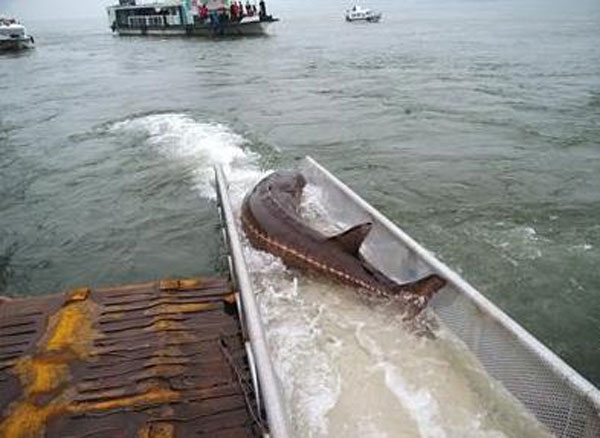 |
|
A captured Chinese sturgeon is set free to the Yangtze River by researchers. [File photo] |
It is the first time researchers discovered such a halt in natural reproduction among sturgeon since records began 32 years ago when Gezhou Dam was built.
The dam subsequently blocked the channel for adult sturgeon migrating to traditional spawning sites upstream. Thankfully, the fish found a new site for reproduction further downstream.
However, population numbers are decreasing due to pollution and related human action. An estimated 10,000 Chinese sturgeon were detected in the Yangtze River during the 1970s. The number sharply dropped to some 2,200 in the 1980s after Gezhou Dam was completed, and to 363 in 2000.
Wei Qiwei, an expert on Chinese sturgeon, said severe pollution and overfishing have threatened the Yangtze's aquatic ecosystem, which directly affected sturgeon survival rates.
The new spawning site, alongside relevant conservation areas, have all suffered under new engineering projects. An embankment was set up downstream in 2004, which directly destroyed spawning grounds. Besides, local government decided to reduce the reservation size in 2008, making it harder for sturgeon to reproduce in the region.
China has conducted a protection drive for the rare species since the 1980s. Scientists have since tested both artificial breeding and reintroduction into the wild. However, monitoring of the Yangtze estuary showed the population of artificially reproduced fish accounted for only 5 percent of the total population.
The Chinese sturgeon, dating back to the Cretaceous period, is listed as being under top national protection. The species usually spawn in fresh water and migrate to salt water to mature.
